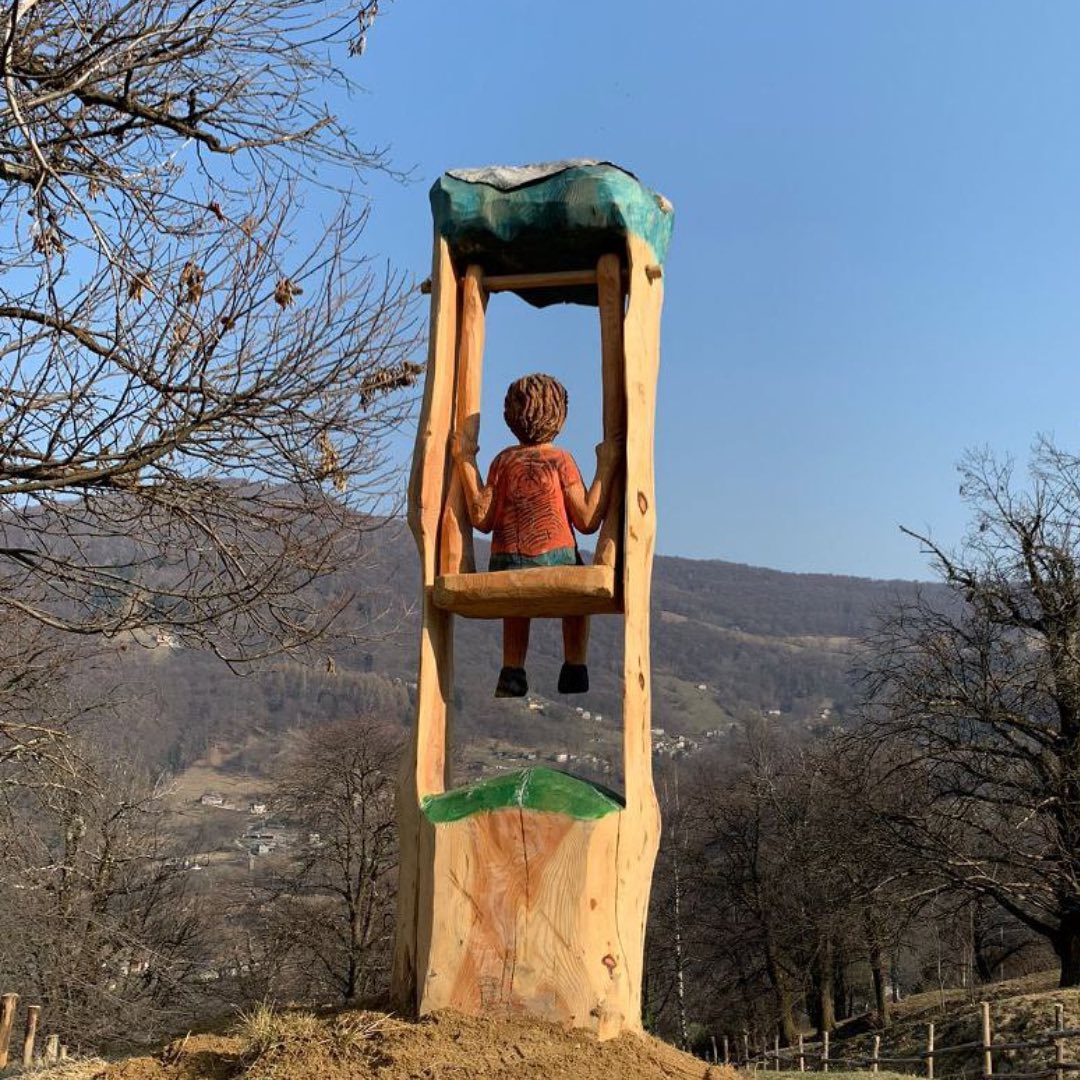The Arboretum created to enhance the border between Italy and Switzerland
The students of Liceo Gallio in Como, who participated in ASOC as Team ROAD, have chosen to monitor a project that involves the creation of two arboretums and a museum at the border between Italy and Switzerland, with the aim of establishing a true cross-border cultural hub. They did this through the educational path and especially with the communication channels they activated for the 2021-2022 edition of A Scuola di OpenCoesione. Telling the story of a project that spans two countries, Italy and Switzerland, of such great magnitude and involving various partners was not easy, but the class, through the civic monitoring process they carried out, delved into and described all the characteristics of the intervention, highlighting its different components, the municipalities involved, and the nine beneficiaries of the funding.

It is a project aimed at enhancing the historical, artistic, cultural, and environmental heritage as a tool to reduce territorial disparities and promote active cooperation in border areas through the creation of two arboretums—one dispersed and one monumental—a Land Art trail with scholarships for young artists from around the world, and a museum dedicated to the still uncatalogued works of the Jewish artist Karl Schmid, a 20th-century painter, sculptor, engraver, illustrator, and graphic artist. Thanks to the collaboration with the Gariwo foundation, the dispersed arboretum also aims to enhance the “garden of memory”, with some trees dedicated to the “righteous”, those who “sacrificed” their lives for the benefit of others.
To bring young people closer to art, four Creativity Spaces have been planned in restored rural sites, serving as venues for cultural and artistic activities, and as meeting places for artists and master craftsmen. Completing the artistic/environmental trail is an eco-friendly intermodal route from lake to lake.

(Ph. M.A.R.K.S. Project Facebook Page)
"As part of this cross-border cooperation initiative between Italy and Switzerland, funded by the Interreg 2014-2020 Programme, among the various actions implemented is the creation of the Arboretum Intelvi, which is developed within one of the most beautiful and spectacular border areas.
This place, where the border takes on a valuable landscape significance, serves as a balcony overlooking two lakes, Como and Lugano, and the mountains of the Alps and the pre-Alpine region.
This territory serves as a living historical testimony of the interaction between people and cultures, marked by the presence of the trenches of the Cadorna Line, the Customs staircase, and the gaps in the barbed wire once traversed by war exiles and now by migrants".
These are the words of Ferruccio Rigola, President of the Lario Intelvese Mountain Community, the lead partner of the project in Italy, written as a preface to the "Travel Diary" created to provide users with a practical guide for discovering the points of interest that were created, restored, and enhanced as part of this project. "The Arboretum Intelvi, where the trees serve as guardians of memory, is situated in the same places where Jews once fled and where the Righteous of all times, who dedicated themselves to the good of humanity, will be forever remembered thanks to the plaques dedicated to them".

After various surveys and investigations conducted among the students of their school, Team ROAD found that there is little awareness among young people about the Arboretum established between Italy and Switzerland, despite its significant impact, particularly on the tourism sector, which was examined by the class during their educational journey through statistics and data collected with the support of Italian Institute of Statistics. "We discovered that the Valley is so little known that it is not even considered among the main Lombard Valleys (for tourism purposes). Its potential is currently not being leveraged to promote tourism influx or even to benefit the local population".
At the time of their civic monitoring, in the aftermath of the Covid-19 pandemic, which inevitably caused delays, the intervention was funded at 55%. In 2023, the project, as reported on the OpenCoesione website, is now completed. Could it have been the students' enthusiasm that motivated the project leaders? Certainly, the young people from Como played an important role as active citizens, driven by the desire to highlight and bring to the public's attention the characteristics of a fascinating territory rich with stories to tell.




